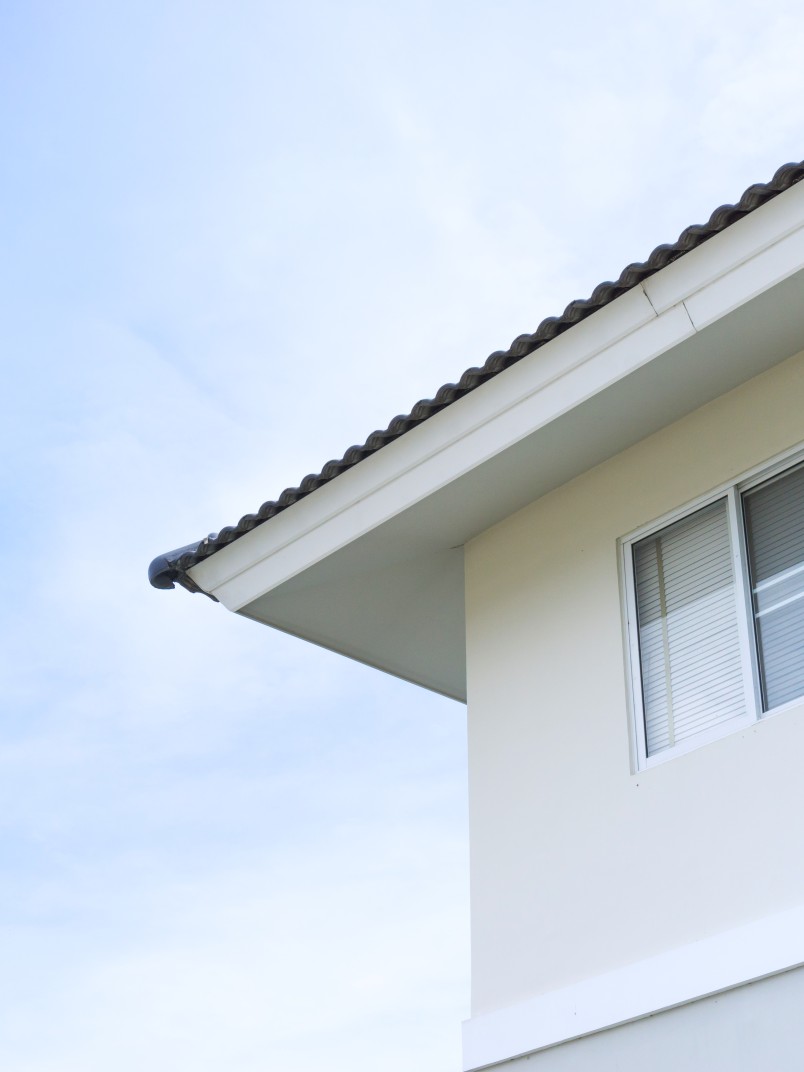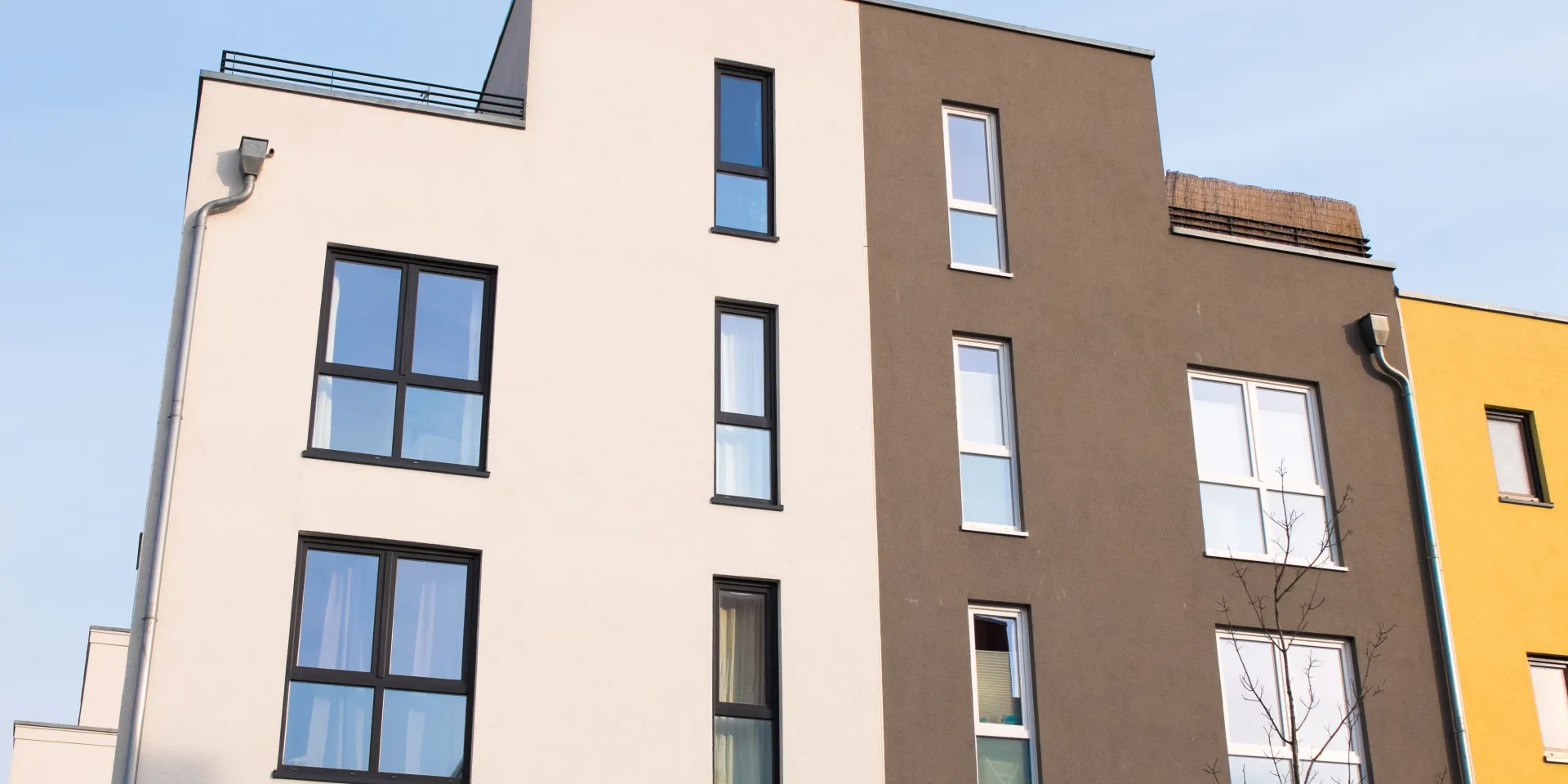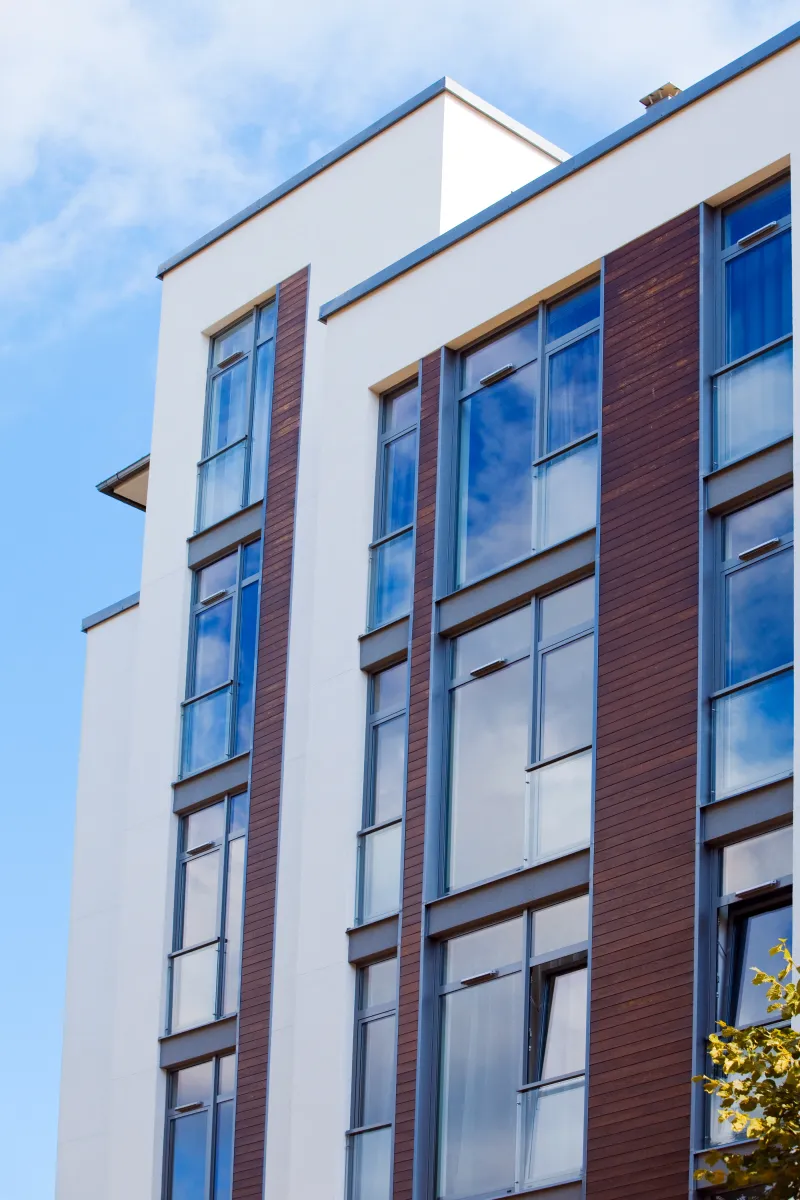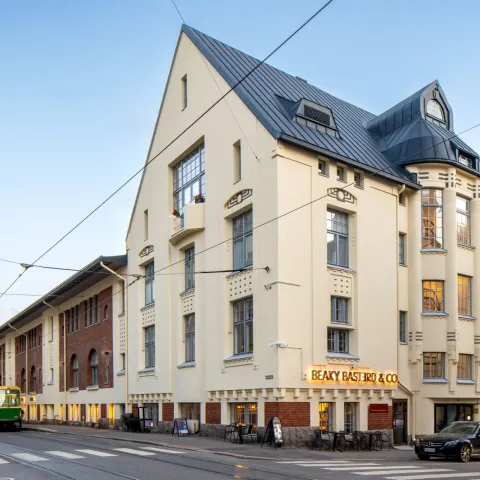Climate change challenges mineral facades

Climate change increases the climatic load for all exterior surfaces. Mineral facades become damaged over time and need regular care and correct products to ensure the high quality and durability of the facade. Tikkurila has several products that can be used to protect the surfaces.
When it comes to mineral facade surface protection, climate change needs to be considered as a factor that affects the quality and durability of the building surface.
In the future, climate change can for example further intensify the effects of wind driven rain which plays a major role in critical deterioration mechanisms. The rising temperatures and poor drying conditions cause faster deterioration processes on the surfaces, such as growth of algae and mould, frost damage and corrosion.
To increase the durability of surfaces with the highest climate load, careful planning and protection is needed. With the right products and correctly timed maintenance procedures, the deterioration rate can be reduced significantly.
How to reduce the effect of climate change with paint?
Considering the life cycle of the building, regular maintenance actions are of critical importance. To reduce emissions, maintenance cycles should be longer and long cycles cannot be achieved without using the correct paint products. The goal is to avoid having to paint or wash the surface too often and here the correct understanding of surface materials and related products is the key to success.
Tikkurila Finngard Clean is a great product for exterior painting. Due to its super hydrophobic surface, the paint repels water and keeps the structure clean and dry, even in impure weather conditions. The paint also allows water to come through from the substrate as vapour.
Tikkurila Silicone Allweather is a water-borne, alkali-resistant silicone modified acrylic paint that protects the concrete against humidity and carbonation with excellent coverage, colour retention and durability. It has early rain resistance and its wider application temperature range extends the painting season earlier in the spring and later into the autumn. It can be used for painting concrete structures and surfaces rendered with a cement rich mortar.
What to consider when choosing the right surface product?
There are several types of mineral surfaces and naturally the base material and the nature of the project (renovation or a new building) affect the product selection.
Also, the requested visual end-result and desired levels of liquid water and water vapour permeability of the surface need to be considered when choosing the correct paint with the correct substrate.
Tikkurila Finngard 150 is an ideal product for painting concrete structures and concrete surfaces rendered with cement mortars, especially as a first coating. Tikkurila Finngard 150 protects the concrete against humidity and carbonation. The inorganic colour pigments used in its tinting system provide excellent weather-resistance, ensuring that the colours can withstand demanding conditions.
Please note that when applying paint or cleaning products on mineral surfaces, it is critical to follow the instructions provided by the manufacturer.
Definitions for terms used in the article
The liquid water permeability (also known as water uptake or water absorption)
The liquid water permeability is used to determine the amount of water absorbed under specified conditions. Different materials have better or worse water absorption capacity.
The test is carried out in accordance with the European standard EN 1062-3. In the paint specification this parameter is marked by letter W from W0 – not classified to W3 low liquid water permeability.
If the facade needs the best protection against water penetration, then it must be painted with a lower liquid water permeability category (W3).
Water vapour permeability
Water vapour permeability refers to the material's ability to allow a vapour (such as water vapour) to pass through it. It measures how much vapour is transmitted through a material under a given set of circumstances. The higher the value of the permeability, the more rapidly vapour can pass through it.
The test is carried out in accordance with the European standard EN ISO 7783-2. In the paint specification this parameter is marked by letter V from V0 – not classified to V3 low water vapor permeability.
The values for water permeability and the permeability to water vapour are listed in the paint’s product information.
Hydrophobic surface
The term hydrophobic literally translates as “the fear of water”. Hydrophobic surfaces repel water.
Want to learn more and get access to exclusive information?
Feed your creativity with latest trends and grow your know-how about surface treatment solutions. Join Tikkurila Pro Designer - a new arena for creative minds in architecture and interior design.



